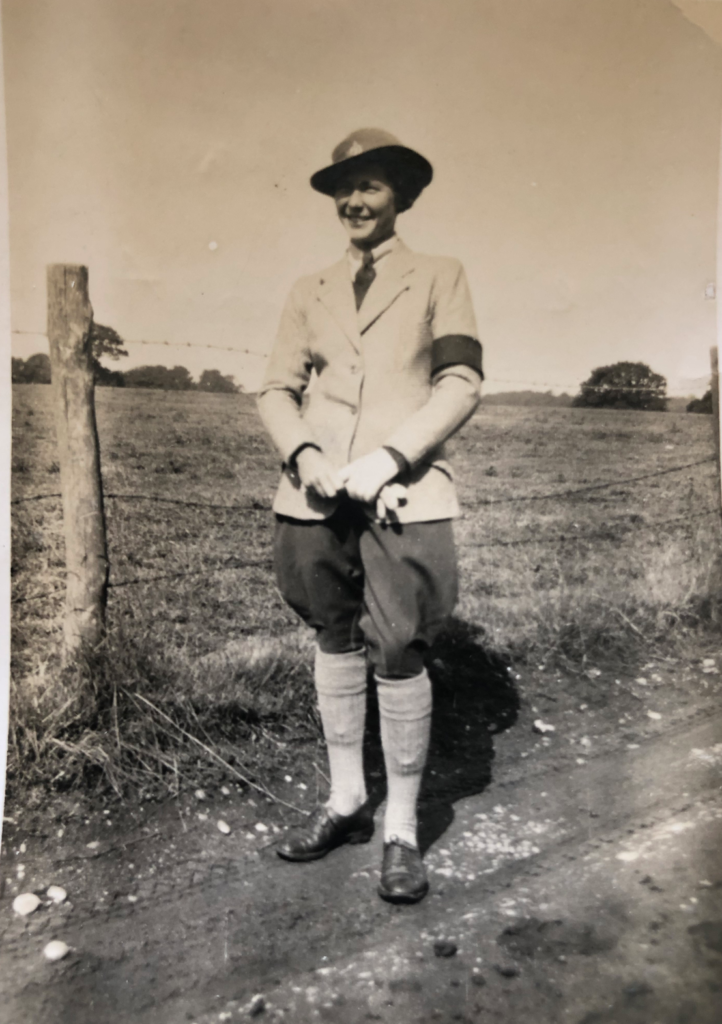
The farmwork placed upon the shoulders of women was strenuous, nothing like many had done before. From threshing to milking cows, the work was tiring and incredibly demanding. Joan Mant accounts, some girls but on a whole stone of muscle due to the heavy work which they were undertaking as their role as Land Girl.
Land Girl Jean Birtles (née Bannister) remembers a typical working day
- 5am Milking the cows
- 8am Breakfast (about 30mins)
- 8.30am Clean out the cow sheds and wash then sterilize the milking equipment
- 12.30 Lunch (about 45 mins)
- 1.30pm Get the cows in from the fields, scrub them down and wash the stone floor
- 5.30pm home for tea (about 30mins)
Continue reading below to find out about the range of work carried out by Land Girls such as Jean.
Animal farming
During the war, Land Girls spent a large part of their time looking after different farm animals.
Pigs were a valuable source of food for war-time Britain. Some Land Girls were responsible for their welfare, from birth to slaughter. Typical jobs surrounding the farming of pigs included:-
- The mixing of ingredients for their food
- Helping with the birth of piglets
- Keeping records of the sows and each of their litters
- Separating the different breeds. This was important because different pig breeds behave differently – and in some cases badly, if multiple breeds were mixed together.
In many cases Land Girls had to feed motherless lambs and sheer sheep. Land girls often grew attached to their animals and were sometimes upset when sending them to slaughter – and having them served up on their plate as the Sunday roast!
Mrs W Farr remembered how:
One farmer sent me to feed the pigs. I had never seen such huge pigs. I wobbled unsteadily over the stye, a bucket of meal in each hand, and gingerly opened the gate. Whoops! A huge boar charge me, knocking me flat and covering me from head to foot in meal. And my clothes didn’t exactly smell of sweet violets, either. I got a lot of leg pulling for weeks afterwards. But we all seemed to thrive on it. We were rosy-cheeked, healthy and had loads of fun. I wouldn’t have missed it for the world.”
‘Bedford on Sunday’ newspaper, 24 April 1977, p5
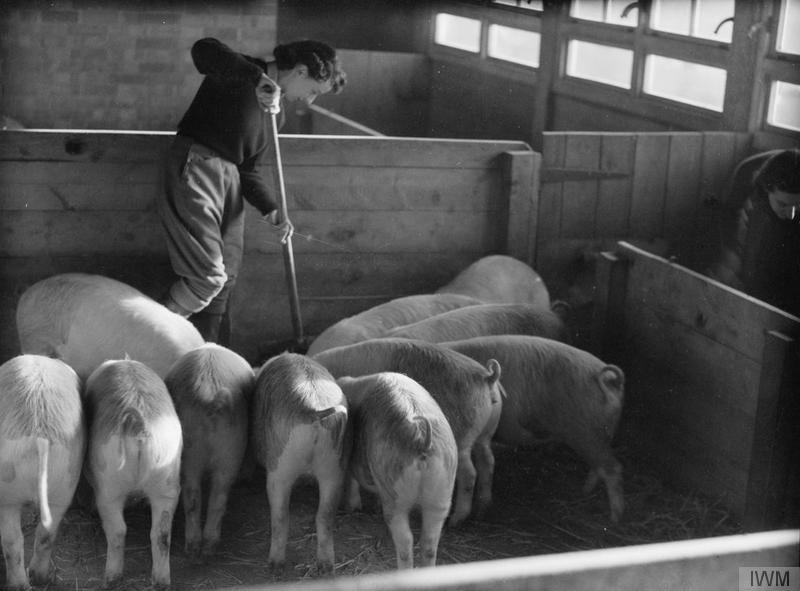
Dairy farming
Land Girls were sometimes responsible for over 30-40 cows which posed quite a daunting prospect for some new girls who didn’t even know what a cow was! The day usually began and ended with the milking of the cow (according to Mant, taking 7 – 10 minutes), which in the majority of cases went with a hygiene routine of washing the udders and milking equipment (if farms were lucky enough to have the luxury of this mechanism).
Other tasks included recording the yields of the cow to delivering the milk to the local community. This again shows the level (and range) of responsibility which a typical Land Girl had on her shoulders as well as illustrating some of the skills which she would have developed over the years.
Dealing with animals was a mixed experience for the different Land Girls. For those who had come from a country background, then working with animals came ‘second nature’ to them. However, for those ‘town gals’, working with animals was another kettle of fish! Grimwood recounts an experience where she didn’t know the difference between a cow or a bull – not altogether unusual for the inexperienced Land Girl…
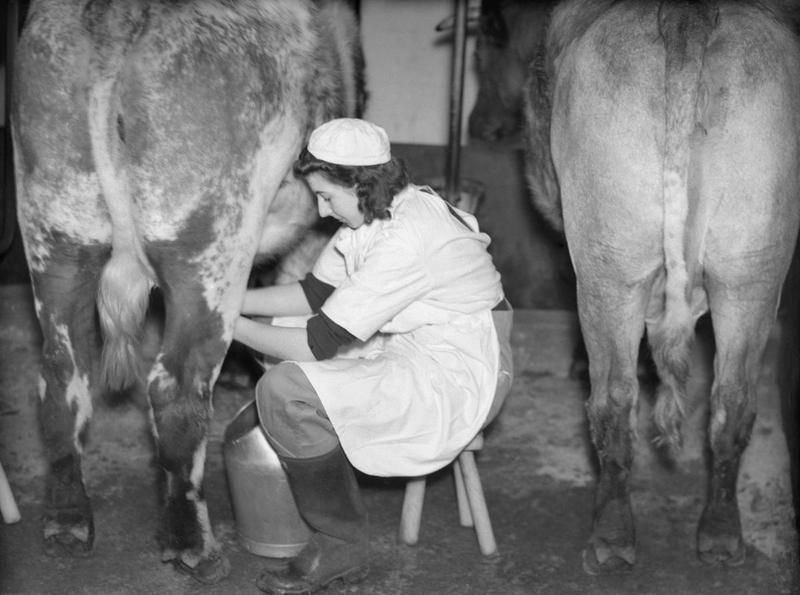
A member of the Women’s Land Army milks a cow, probably at the WLA training centre at Cannington, Somerset, c.1940. Source: IWM D186
Flax growing
‘Flax growing’ was the growing of a 5 petal light blue flower with a stem of 3-4 feet. This plant was then manufactured into linen (a strong and durable fabric) in the factory, which was key for the production of clothes, during times of shortages. The plant was brought in from farmers, stacked in barns and sent to the factories for threshing. The Land Girls’ role was to pull the plant from the ground and prepare the plant for the factories.
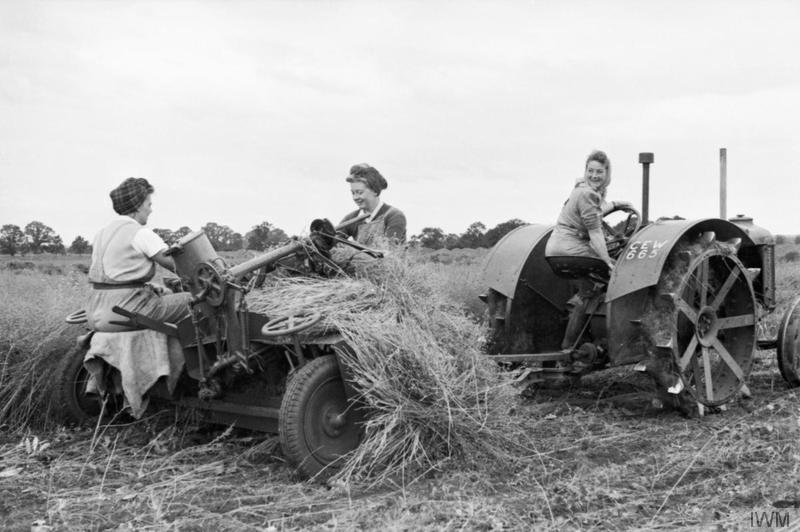
Three Land Girls harvest flax in a field which had been derelict the previous year. One woman drives the tractor as the two others sit at the rear on the flax-pulling ‘trailer’.
Source: IWM D 9617
Hedging and ditching
Other work around the farm included the cutting and laying of hedges. Land Girls cleared waste land and ditches and cut back trees. Land Girl K.M.Girling wrote in The Land Girl in August 1943 that ‘to tame a riot of wild growth into a good, thickset hedge, which leaves no loophole for straying sheep or cattle calls for considerable craftsmanship’ and the a ‘billhook, axe, splashing hook and mallet’. You can read her longer other advice here.
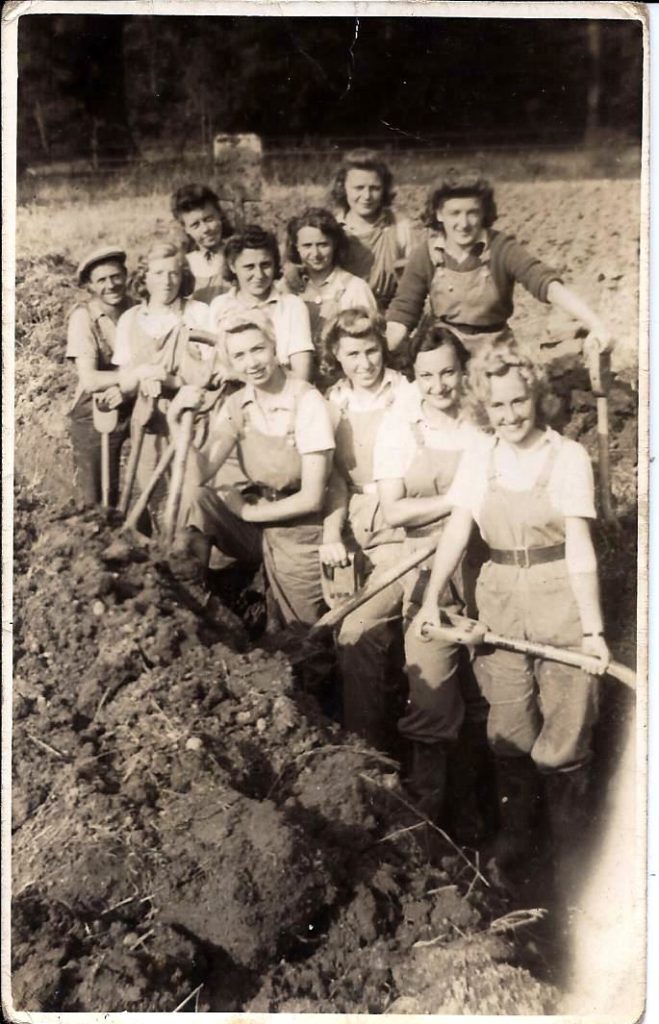
Florence Louisa Mullender with fellow Land Girls digging a ditch
Market gardening
Market gardening included growing crops, such as tomatoes, carrots, potatoes and brussel sprouts ready for the market. After being picked, this produce to be boxed off ready for the market. Land Girls were responsible for the growing of vegetables and As Joan Mant recounts, some girls were given a book entitled ‘How to Grow and Produce Your Own Food’ and were expected to follow those instructions when undertaking their work. She also remembers how Land Girls would end up not smelling like roses, but ‘a harvest festival’.
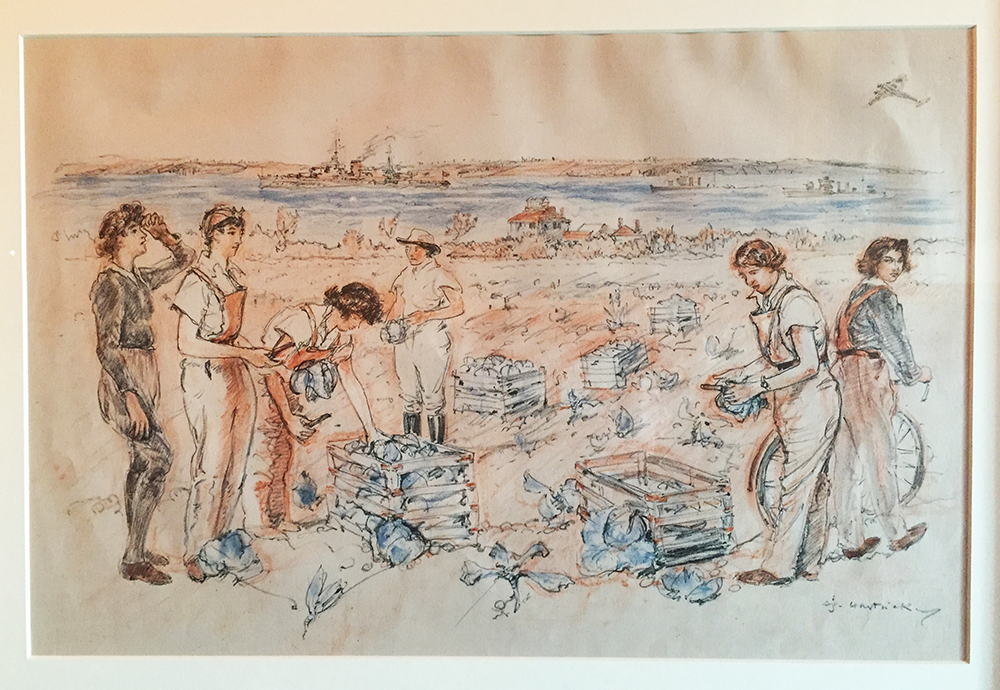
Land girls harvesting cabbages. A group of women stand in a field close to the coast. In the background there is a ship out at sea, and the Isle of Wight lies in the distance. WW2 caption: “The scene is Hampshire, with the Isle of Wight beyond. Milk, poultry and vegetables are all supplied to the Naval hospital ships, mainly through the efforts of the Women’s Land Army”.
Source: Photo of print from the People’s History Museum. Courtesy of Stuart Antrobus. Description from IWM.
Pest Control
Typical pest control work involved applying pesticide powder, or spray, to apple trees. This was potentially dangerous work owing to the temperamental nature of the mechanisms which were used to apply the powder or spray. Land Girls also helped to eradicate the Colorado beetle.
Land Girls also worked in mobile gangs working to kill rats. The process involved the laying of sugared bait and clearing away the dead rats.
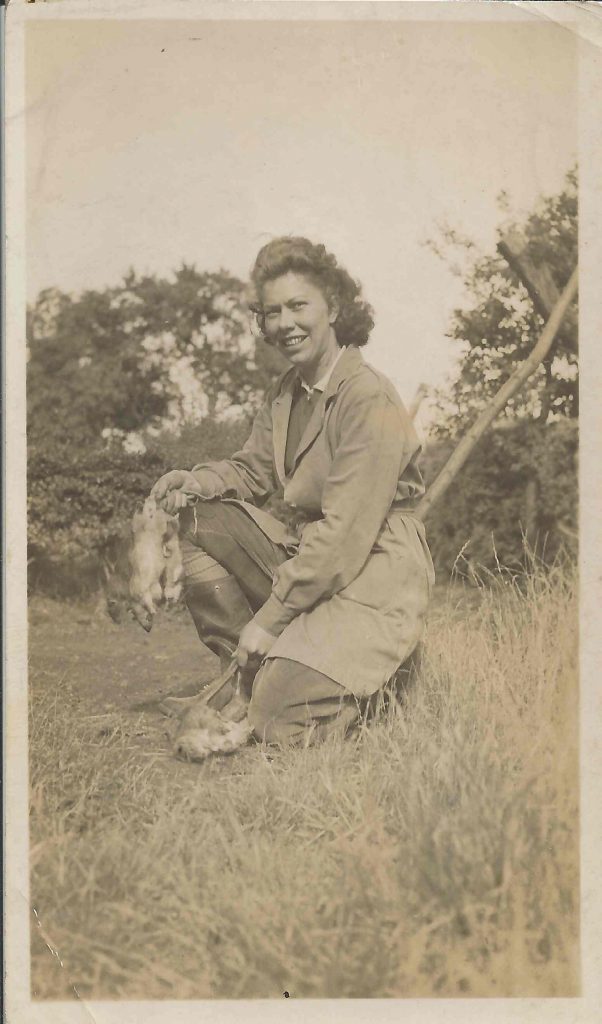
Land Girl Dorothy Clayden clutching the rats she was responsible for killing.
Ploughing
Land Girls often learned ploughing from regular farmhands by watching their approach ‘on the job’. Even then, it was still difficult for women to put into practice what farmworkers appeared to do effortlessly. Nonetheless over time, many Land Girls picked up this new skill and became second nature. Having not driven before, these newly-acquired skills gave women career prospects for when the war was over.
Many Land Girls learnt how to become ‘mechanised’ and drive a tractor. Most Land Girls knew nothing about driving, let alone how to drive a Fordson tractor with a powerful engine.
With driving a tractor came the responsibility of looking after it, especially in the winter. Joan Snelling remembers how in the winter, she had to
to drain the radiator [each night] before covering it up with a large tarpaulin.
Joan Mary Snelling, A Land Girl’s War (Ipswich: Old Pond Publishing Ltd, 2004), pp. 70-71
When forgetting to do this just once, the cylinders became cracked, much to the despair of the farmer who had to find replacements. Land Girls needed to take seriously the responsibility of maintaining expensive farming equipment.
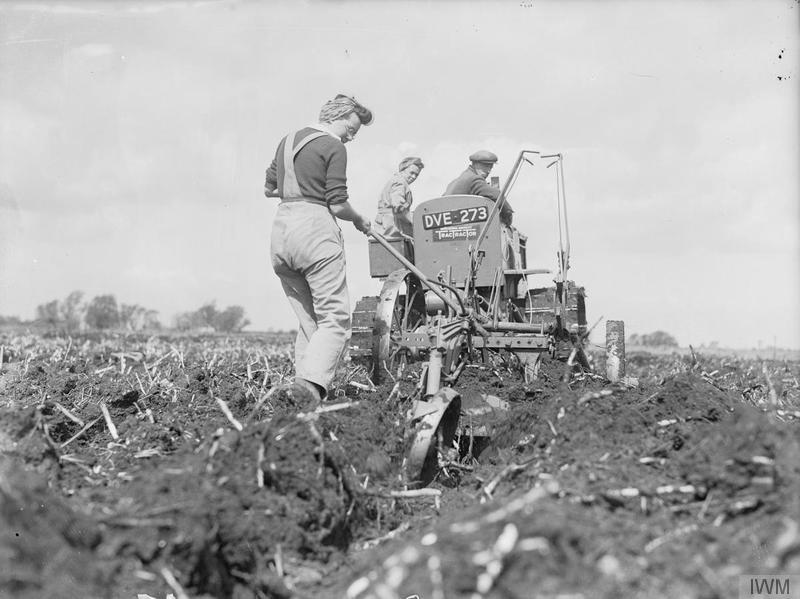
Members of the WLA help a farmer to plough reclaimed fenland in Cambridgeshire. The deep digger plough and International tractor being used are ploughing 15 inches deep.
Source: IWM D 8455
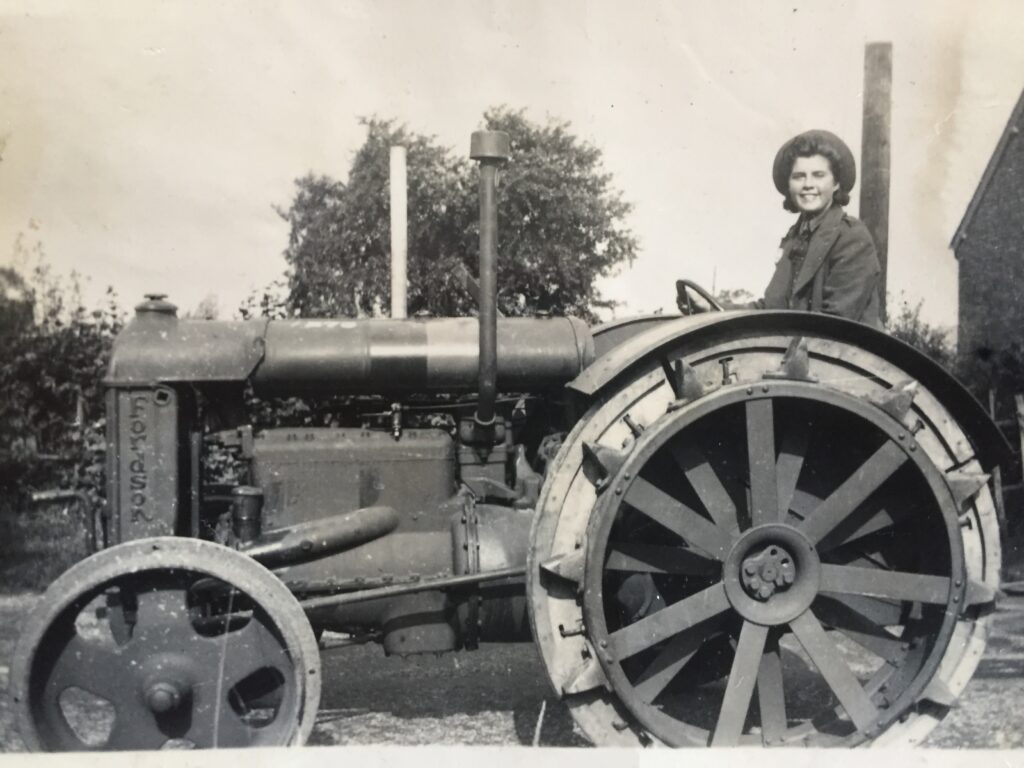
Threshing
The harvest, in late August and September, was the main farming event of the year. This was a time where Land Girls were drawn upon greatly, along with other members of the local community.
Threshing was a key part of the harvest, as after reaping, it involved loosening the edible part of grain from the chaff. Land Girl Joan Snelling recounts that it was one of the dirtiest jobs, especially removing the sacks of colder as they became filled from the threshing machine. She remembers how dirt got everywhere, including her eyes, which was particularly painful.
Women were advised to tie string around their legs in order to stop mice and rats from running up trousers.
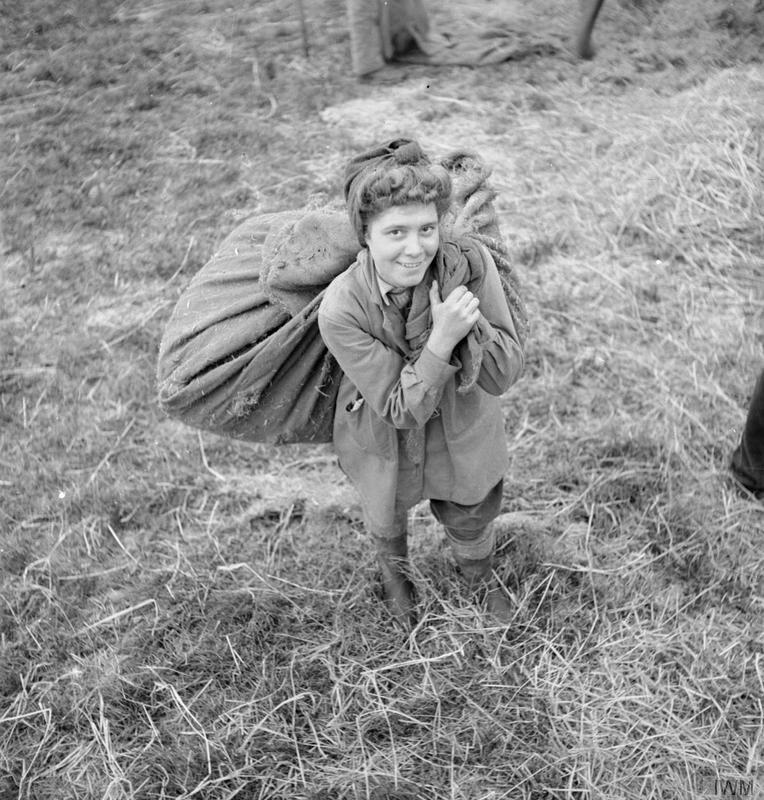
Land Girl Dorothy Sills (aged 19) from Middlesborough helps with the harvest on a farm in Yorkshire. She was a shop assistant before joining the Women’s Land Army. She is shown helping with the threshing, by carrying a large sack of wheat on her shoulders.
Source: IWM D 10778